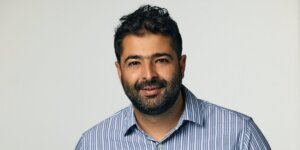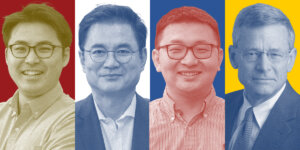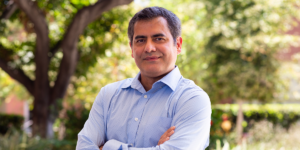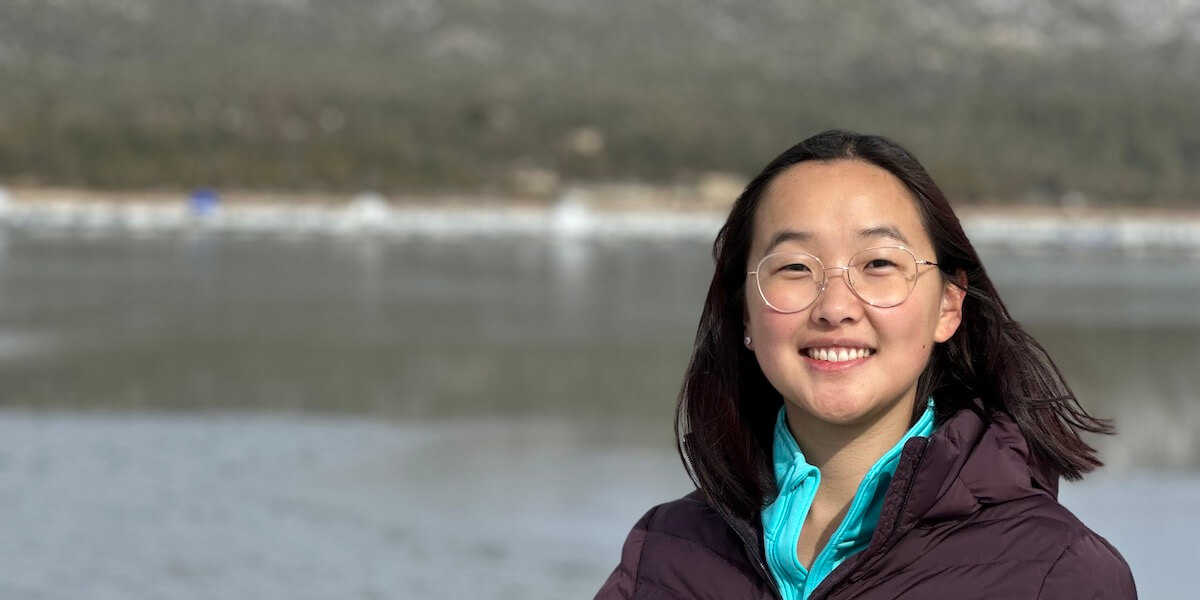
Ph.D. Student in the Mork Family Department of Chemical Engineering and Materials Science, Claire Wu.
When she’s not harnessing lasers to craft materials for high-tech applications, Claire Wu can be found wielding her violin with the USC Student Symphony Orchestra. The Bay Area native finds music a perfect balance to her research into thin films — novel materials that can be used for cutting-edge electronics.
A Ph.D. student in the Mork Family Department of Chemical Engineering and Materials Science, Wu was recently honored with a highly competitive National Science Foundation Graduate Research Fellowship, allowing her to advance her material science research.
Wu works within the Laboratory for Complex Materials and Devices under the supervision of Associate Professor of Chemical Engineering and Materials Science and Electrical and Computer Engineering Jayakanth Ravichandran. The Ravichandran Lab focuses on synthesizing high-quality materials for applications in energy and electronics. Wu and her collaborators are growing thin films using a process called pulsed laser deposition – where a pulsing laser beam strikes a material, vaporizing it and creating a deposit of thin film.
“Generally, we start with the material in a powder form that we press into a highly concentrated puck or pellet. Then using a very high-power pulsed laser, we vaporize parts of the pellet to generate a thin film,” Wu said.
“These thin films are used for applications for sustainable energy and mid-infrared detection. I’ll hopefully use this fellowship money to develop new materials for those applications,” Wu said. “The materials I’m working on are chalcogenide perovskites, and we’re hoping to demonstrate that these materials can be used for back-end-of-the-line semiconductor manufacturing.”
Wu said the material’s properties were exciting because it is a wide-bandgap semiconductor. A bandgap refers to the energy difference between the top of the valence band in a semiconductor and the bottom of the conduction band. A larger distance allows semiconductor devices to operate at higher voltages, temperatures, and frequencies. This means electronic components can be smaller, faster, more reliable, and more efficient than when made with silicon-based semiconductor materials. Wu is researching p-type semiconductor materials, which enable electric currents to move through holes in the material.
“The broader application of the work is really exciting. I think, as a grad student, it’s easy to get stuck in the nitty-gritty of the day-to-day work, so it’s nice to always remind myself of what the
end goal is.” Wu said. “I think the method we use to grow these films —pulsed laser deposition — is really exciting. It’s not widely used in industry, more so used in research facilities. It’s very good at what we want it to do.”
Wu completed her undergraduate studies in chemical engineering at the University of California Santa Barbara but soon gravitated towards materials engineering at USC Viterbi because of the exciting opportunities the field offered to create and discover new materials.
Wu said that working in the Laboratory for Complex Materials and Devices was challenging but also offered a supportive group environment where she could learn a lot from her fellow Ph.D. students.
Finding Harmony in the Symphony
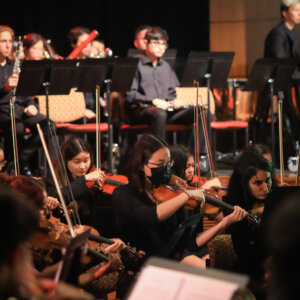
Claire Wu plays violin within the USC Student Symphony Orchestra.
Wu has been a keen violinist since middle school, playing in school orchestras and throughout her undergraduate degree. She enjoys the social aspects of the student-run USC Student Symphony Orchestra, which allows her to work with students of many different majors.
“I think 90% of my week is spent around science people, talking about science, and trying to problem-solve. So, it’s nice just to have another environment to think about other things,” Wu said. “I think there are definitely a lot of parallels that can be drawn with science and playing classical music — it’s a lot of order and following instructions. But then it’s nice to have a group activity where you all are doing the same thing together because a Ph.D. can be isolating when you’re each working on your own thing.”
Wu said she’s hoping to pursue a career in industry and is keeping her options open regarding her research career and whether she’ll pursue teaching. Meanwhile, her NSF Graduate Research Fellowship will offer her the flexibility of funding security until the end of the fourth year of her Ph.D.
“I’m open to any sort of career, but I’d like to hopefully work in the energy sector, or the semiconductor industry. So we’ll see what comes,” Wu said.
Published on June 23rd, 2023
Last updated on June 23rd, 2023




